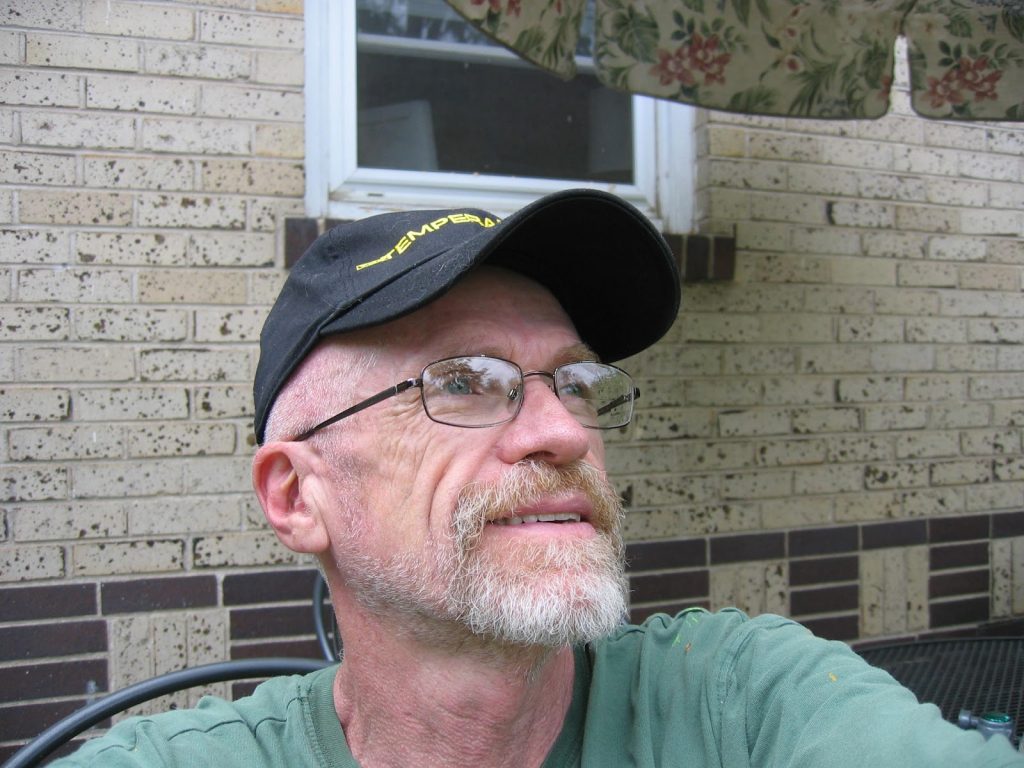1973 and I was living on Elati Street in Denver in a railroad duplex we were
renting from a landlord who I seem to recall lived in Texas. There was at any
one time 3-6 folks inhabiting the place. We had all recently relocated from
Champaign, Illinois. The men all had homosexual tendencies, which for the most
part were still in a state of unactualized potential and a couple of, I
believe, straight women who were fluidly moving in and out of residence.
Sue had recently checked out the hospital a few blocks to the east named at
that time Denver General, now called Denver Health. She came home telling the
mostly under-employed men in the household that the hospital was hiring several
different positions and maybe we should check it out. I was at the time working
down in Englewood at Craig Rehab hospital in their kitchen and having some
minimal patient contact. Having no car it was a bus ride back and forth down
Broadway and I was anxious for a more challenging change closer to home.
of 1973 I was hired as a hospital attendant at Denver General on the inpatient
psychiatric ward, 4-West. The attendant staff was all male and all my
co-workers conscientious objectors. I had avoided the draft by having a high
lottery number and the good sense to not volunteer and end up possibly coming
back to the States in a body bag from Vietnam.
all male I suspect to provide muscle for the all female nurses so I am not sure
why I got the job being all of 145-pounds soaking wet in those days. This turned
out to be my “once in a lifetime” decision that has given my professional life
direction for the past 42-years. I am assuming that something that is once in a
lifetime should have more impact that one’s usual run of the mill life happenings
and this decision to wade into nursing was it for me. The duties of the
attendants did include elements of what I call real nursing i.e. hands on
interaction with clients. No advanced degree was necessary with the ability to
communicate with people in distress being the main requisite of the job.
the mentally ill, especially the homeless mentally ill, had a much better
chance of hospitalization rather than today’s all too frequent option of
incarceration. And so began my several decades of interacting with Denver’s
most disenfranchised. I did detour for 10-years to what was then called
Colorado General but in those days they actually served the indigent uninsured
as part of their mission. That hospital
has also changed its named, moved to Aurora and now has TV ads featuring Peyton
Manning. I find the tone and pitch of these commercials to be very off-putting
but I will not explore that further at this time.
nursing is particularly poignant for me today since back on the 28th
of November 2015 was my last day of work as a nurse at Denver Health. It was a long
very busy 13-hour day in Urgent Care attending to many of the same type of
folks and their issues as I was back in 1973.
with a couple things. First, is that Colorado has the chance to vote on single payer
health care in November 2016. We as a state currently have a very high rate of medically
insured thanks in large part to accepting federal Medicaid support through the
Affordable Care Act. Single payer would though be a great improvement in spite
of this current commendable high-insured rate.
a series of encounters I had with a homeless fellow I ran across on my walks
into work my last two days on the job. The first occurred at 0600 on Friday the
27th. It was a cold snowy morning and this fellow was under a
blanket on the Cherry Creek Bridge on Broadway just south of Speer Blvd. This is
often a favorite spot for the homeless folks and he seemed bundled up and out
of the wind so I proceeded to work thinking though I might see him later in
Urgent Care.
about 7:15 pm I walked home the same way and was surprised he was still in the same
spot but now sitting up and still covered in his blanket. My assumption,
perhaps wrong, was that he had spent the day out in the sub-freezing elements.
I kept walking but after crossing Broadway I turned around thinking this is
really not OK even for a seasoned homeless person. I cautiously engaged him and he popped his
head out of the blanket. He said he was OK that the blanket was warm. The next
words out his mouth were to ask if I had a smoke. Despite the obvious health
issues related to smoking to lecture him on this under the current
circumstances seemed ludicrous. Instead I gave him the four bucks I had and
encouraged him to walk the one block down to Denver Health where he could spend
the night in the Emergency Department waiting room at least.
into work again I was stunned he was in the same spot. Still under his blanket,
a thick coat and pretty good hat and rhythmic breathing quite noticeable. He
was not lying directly on the pavement but still this could not have been
comfortable. I have over the years encountered numerous homeless who prefer
even sub-zero weather to the shelters for a variety of reasons. I decided I
would walk home later the same way and if still there I would give him the $20
bucks I had. He was however not there in the evening and I wondered if he had
walked down to the hospital or to a shelter or much more likely just moved on.
out of the wind, temperatures in the high teens with lots of traffic and
pedestrians within a few feet and he was reasonably dressed so I never thought
the situation life threatening but if not careful frost bite could have been an
issue for his toes at least. The greatest clothing need for homeless shelters
is socks. I should have brought him a couple pairs from work. Since I walk
central Denver a lot I plan to always venture out especially in wintertime with
an extra pair in my bag.
the Author
by Holy Cross nuns. The bulk of my adult life, some 40 plus years, was spent in
Denver, Colorado as a nurse, gardener and gay/AIDS activist. I have currently returned to Denver after an
extended sabbatical in San Francisco, California.


